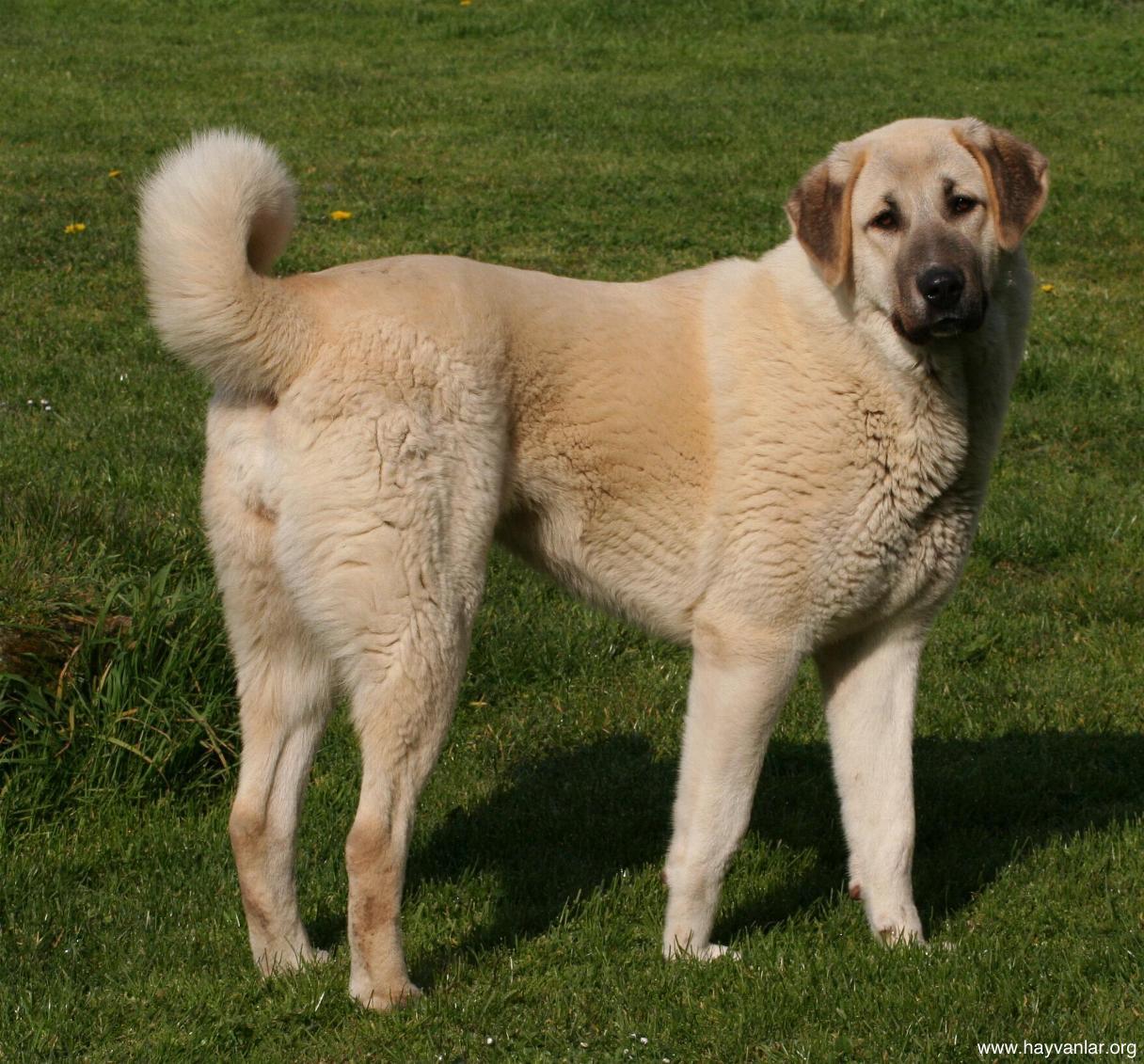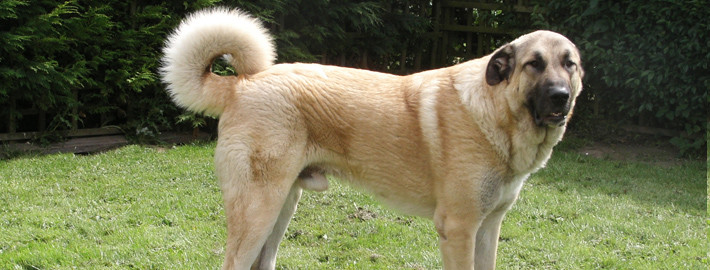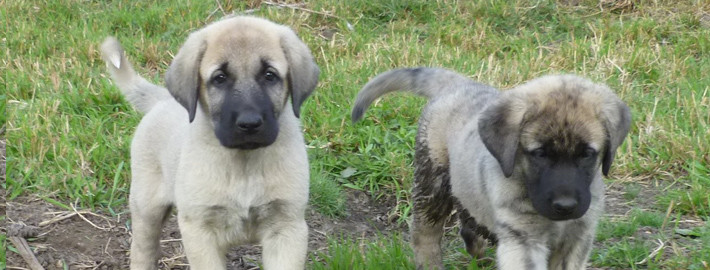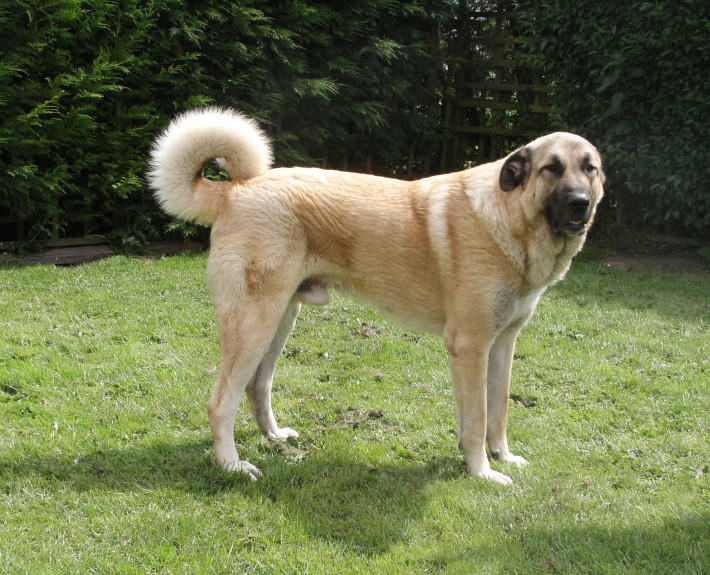What makes the Anatolian Shepherd Unique?
An excellent livestock defender, the independent Anatolian Shepherds can stand up to the fiercest of foes. Though these loyal dogs have varying characteristics, they all make fine guardians and pets in households where there is work for them to do.
Page Contents

SnapShot
| Size: | Males – 66 to 78.7 cm (25.9 to 31 inches) Females – 68.6 to 76.2 cm (27 to 30 inches) |
| Weight: | Males – 41 to 68 kg (90 to 149 lb) Females – 41 to 68 kg (90 to 149 lb) |
| Origin: | Turkey |
| Life Span: | 13 to 15 years |
| Colour: | Red Fawn, Blue Fawn, Brindle, White & Biscuit, Liver, White |
| Litter Size: | 5 to 10 puppies |
Is the Anatolian Shepherd Right For You?
The Anatolian Shepherd is not inclined to play fetch or Frisbee, nor should you expect animated responsiveness. It is very loyal, alert and capable of great speed and endurance. It is intelligent, alert and easy to train, but is not a dog for beginners. It needs a handler who naturally radiates leadership.
Anatolian Shepherds are not recommended for apartment life. They are relatively inactive indoors and will do best with at least a large yard. This breed is very suspicious of strangers, and it is therefore necessary to provide a secure, fenced yard.
In 5 Words
- Independent
- Forceful
- Loving
- Loyal
- Playful
Characteristics
Learn About the Anatolian Shepherd
Description
General Description
These large, agile dogs were developed to protect livestock. Anatolians vary in physical characteristics such as size and coloration, but they are all ruggedly built and proportionate. These dogs have rectangular muzzles and hanging lips, both of which are black in color. The breed standards state that Anatolians should have a scissors bite but a level bite is also acceptable. Triangular, v-shaped ears with a rounded tip are present on this breed. Anatolians have almond shaped, medium size eyes that range in color from dark brown to light amber. Except for liver colored dogs, which will have brown eye rims and noses, the breed generally has black eye rims. Anatolians have a level topline, a deep chest, and a back that is shorter than their legs. They also have long, high set tails. Their tails are slightly curled at the end and form a wheel shape when the dogs are alert.
Coat
Medium and medium to long coats are the norm in this breed, but short or rough coated dogs are not uncommon. Anatolians’ typically have a dense undercoat. Their outer coats will vary between 1 to 4 inches in length. These dogs will have somewhat lengthier fur around their neck. Their coat is also longer around the tail and collar areas. Acceptable color patterns include, but are not limited to, the following types: fawn with a black mask, pinto, brindle, and white.
Size
These dogs average between 80 and 150 pounds in weight. Females of this breed are somewhat smaller than the males are. Generally speaking, Anatolians measure between 26 and 31 inches at the withers, or the shoulder blades. Females should ideally be between 27 and 30 inches in height, with the males being somewhat more varied in size. Males Anatolians can be between 26 and 31 inches tall.
Short History of the Anatolian Shepherd
This Turkish breed has been modified over the years to fulfil a number of specific purposes. Originally, members of this breed were used for hunting and as combat dogs during wars. However, they progressed from those lines of work to the less bellicose task of protecting families and flocks of animals. Anatolian Shepherd Dogs are quite effective against predators such as bears and wolves. These dogs were further bred to allow them to blend in with the animals they were protecting, which resulted in large variations in their physical makeup.
Temperament
Anatolian Shepherd Dogs are adroit at protecting their human families as well as their flocks. While this is a good characteristic, the dogs can be territorial and wary of strangers. These animals tend to bark if they become suspicious of someone or something. However, around their human families and animals that they have known since their youth Anatolians have a loyal, easy going nature. They are well-behaved around young members of their own family but may not always be playful enough to please children. Anatolians may also misinterpret unfamiliar children’s roughhousing as a threat to their owners’ offspring and act accordingly, so all play should be supervised in such instances.
Caring for Your Anatolian Shepherd
General Health
On average, Anatolian Shepherd Dogs live between 10 and 13 years. Some health concerns for this breed include ear infections, entropion, carpal laxity syndrome, various forms of dysplasia, hypothyroidism, congenital deafness, ankyloglossia, and cancer. However, for the most part, this is a healthy breed of dog.
Care
Daily
It is a good idea to make sure these dogs get plenty of exercise on a daily basis. Anatolians can live indoors, outdoors, or a mixture of both places. They need a yard with a secure fence that reaches at least 6 feet in height to keep them safely enclosed. This breed cannot be contained by electric fences and they do not adapt well to situations where they are expected to live in kennels or on chains.
Weekly
Anatolians make are susceptible to ear infections. It is recommended that owners clean out their pets’ ears at least once a week using cotton balls and cleaning solution that has been approved by their veterinarian. Brushing these dogs once a week will help keep households from being inundated with fur. During the two times of the year when they are shedding, members of this breed may need to brushed more frequently. It is also suggested that owners clean their pet’s teeth on a regular basis to prevent bad breath and periodontal disease.
Monthly
All dogs require regular heartworm, flea, and tick prevention medication. Most products work on a monthly basis. As with any breed, it is also a good idea to regularly trim pet’s toenails to prevent them from becoming too long and uncomfortable.
Grooming & Bathing
Aside from a weekly brushing or two, members of this breed do not need much more additional maintenance. Anatolian Shepherds are not prone to the pungent odors that are typical of most breeds. Therefore, they only need to be bathed a few times a year. Yet if one’s dog encounters a skunk or becomes caked with mud, washing the dog is highly recommended.
Exercise & Training
Anatolian Shepherds are protective as a general rule and do not need any training in this regard. Once the dogs reach complete maturity at 1.5 years, they will assume responsibility for both families and livestock. However, these dogs must be socialized from a young age to keep their natural wariness of new experiences, people, and animals from turning into a problem in their later years. Owners will also need to invest in obedience training because these dogs have a tendency to be strong willed. This breed is not recommended for novice owners. Anatolians can run all over individuals who let them get away with things they shouldn’t and they don’t always listen to commands they are given.
Other problems can arise because these dogs may bark too often and/or loudly for their owner’s tastes. This breed also enjoy digging holes in the yard and prefers tunnels to dog houses for escaping from the heat of the day. Anatolians were additionally bred to roam alongside their flock but they occasionally will wander off to scout the area for predators. Owners will need to make sure their pets are properly tagged and micro-chipped. Due to many of their aforementioned characteristics and the dogs’ large size, this breed is not recommended for city dwellers.












